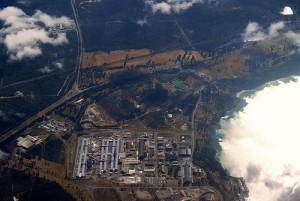Tasmania is not often considered when it comes to migrants coming into Australia. It is true that the majority of migrants arrive into Sydney and Melbourne, but with the very large numbers of migrants in the past 5 years, many are settling in other areas. While Tasmania only accounted for 0.8% of all migrant arrivals since 2006, there are nevertheless some interesting trends. Read on to find out about them!

The 2006 Census population of Tasmania were largely Australian-born. Only 10.6% of the population were overseas born and only 4.3% were from a non-English speaking country. But this is changing. According to the official population estimates, Tasmania’s population has grown by about 20,000 since 2006 (we won’t know exactly until the Census results are released next year). But according to the immigration settlement numbers, there have been 7,325 permanent settler arrivals in that time. What that means is, with total population growth of only 4.2%, the overseas-born population is likely to have increased by at least 15% (and remember New Zealanders aren’t in the settlement figures), and non-English Speaking background by around 5,500 people, or more than a 25% increase on the 20,000 who were in the state in 2006!
So, while Tasmania only accounted for 0.8% of Australia’s migrant intake between 2006 and 2011, it is likely to show the largest proportional increase in CALD population in this timeframe!
Compared to Australia, Tasmania gets more of its migration from the Humanitarian stream. While this makes up 8% of Australian migrants, it’s 23% of migration into Tasmania. This means that the makeup of the countries of birth are different, with more of the smaller emerging refugee communities.
The top 3 countries of birth for migrants to Tasmania are the same as Australia-wide – the UK, China and India. Notably different though is number 5 – 25% of Bhutan migrants went to Tasmania. Compared to Australia, there have also been considerable numbers from Nepal, Thailand, USA, Burma, Sudan and DR Congo. Apart from the USA, many of these are refugees who have been settled in Tasmania.
So where are these migrants going? Migration to Tasmania is concentrated in a few LGAs, mainly in Hobart and Launceston:
- City of Hobart – 1,365 arrivals – predominantly from China, India, and smaller numbers from the UK, Malaysia, USA and Korea.
- City of Launceston – 1,334 arrivals – Bhutan is the largest group here with 241 arrivals. This is a significant change in Launceston and based on 2006 Census numbers would make people from Bhutan the fourth-largest country of birth in the City. About 12% of Australia’s Bhutani migration was into Launceston. Other significant groups are China, Nepal, India, the UK and Burma. Smaller numbers from emerging African communities such as Sudan, Liberia, Congo and Sierra Leone.
- City of Glenorchy – 916 arrivals – Another 108 migrants from Bhutan settled here, along with 106 from the DR of Congo. Much of the migration into Glenorchy is humanitarian stream, with the next largest countries of origin being Burma, India, Philippines, Sudan, Nepal and China.
- Kingborough Municpality – 577 arrivals – More so than other areas, migration to Kingborough is based on English speaking countries – The top 4 are the UK, South Africa, China and the USA. A handful from the main humanitarian stream countries.
- City of Clarence – 396 arrivals – UK and China are the top 2, but with a few from Nepal, Bhutan and Thailand as well.
Where links are highlighted, that council is a .id subscriber, so you can go straight to the profile site and see their demographic makeup for 2006, back to 1991 for all suburbs within that LGA. And these councils will receive the 2011 Census update shedding much more light on the cultural makeup of the population along with a host of other demographic characteristics that tell the story of the area.
If you would like to receive more updates about the Census and information on demographic analysis, do follow us on twitter @dotid or subscribe to our blog. You may also wish to visit us at id.com.au










